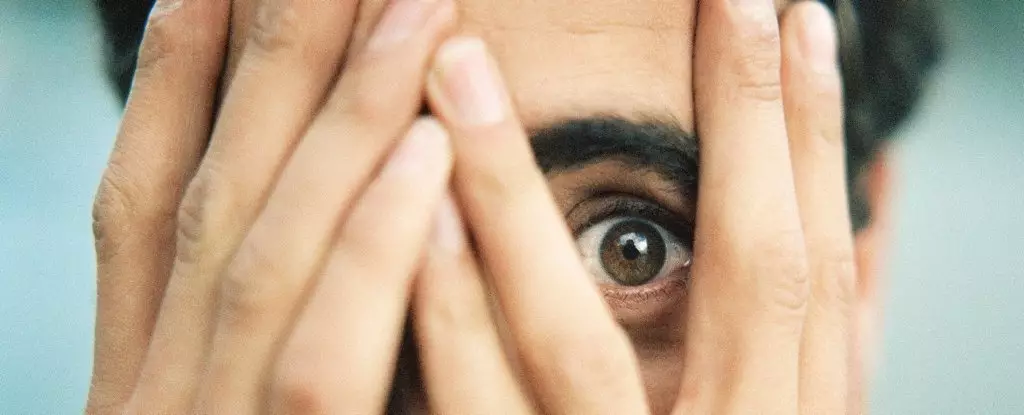Fidgeting is often cast as a quirky habit, dismissed as mere restlessness or a harmless way to cope with boredom. However, for a substantial fraction of the population, witnessing repetitive movements can evoke powerful negative emotions, creating a distracting and vexing experience. This fascinating phenomenon, termed misokinesia—derived from the Greek words for “hatred” and “movement”—has recently begun to capture the attention of researchers. While most people may brush off fidgeting as an inconsequential behavior, studies suggest that approximately one in three individuals carry some sensitivity to this common occurrence, leading to emotional challenges that merit a closer examination.
The Psychological Landscape of Misokinesia
The emotional landscape that surrounds misokinesia is not unlike that of its more well-known counterpart, misophonia—where irritating sounds trigger similar distressing responses. However, misokinesia departs from the auditory realm, focusing instead on visual stimuli. It presents an intriguing psychological enigma that warrants exploration. Researchers led by Sumeet Jaswal at the University of British Columbia embarked on a groundbreaking study that aimed to dissect the complexities of misokinesia. Their findings revealed that not only is misokinesia prevalent among individuals, but it also significantly impacts their emotional well-being and social interactions.
Through a series of carefully constructed experiments involving over 4,100 participants, Jaswal and colleagues were able to categorize and quantify the various dimensions of misokinesia. An astonishing one-third of those surveyed reported feeling discomfort and emotional upheaval upon observing others fidget. This revelation underlines the notion that misokinesia is not simply a niche concern but rather a prevalent emotional challenge that affects many, contrary to the belief that only those with anxiety or related disorders experience such distressing reactions.
Experiencing Misokinesia: Emotional Repercussions
Individuals who suffer from misokinesia often describe their experiences in deeply personal terms. For many, the presence of a fidgeter in their vicinity can lead to emotions ranging from anger and frustration to anxiety—transforming social settings, workplaces, and even learning environments into battlegrounds of heightened tension. The emotional reactions can be profound, leading some to curb their social engagements altogether in an effort to avoid discomfort.
This deeply ingrained emotional response raises vital questions about the nature of empathy and shared human experience. Experts posit that misokinesia may relate to an unconscious mirroring of the psychological states exhibited by fidgeters. Indeed, as many fidgeting individuals often do so out of anxiety or restlessness, observers with misokinesia might unintentionally adopt those emotional states, further exacerbating their discomfort. Such insights illuminate the complexity of human interactions and the lesser-known emotional struggles that many people encounter.
The Cognitive Mechanisms Behind Misokinesia
One of the burning questions surrounding this phenomenon is what underlies the sensitivity to fidgeting behaviors. Initial research spearheaded by Jaswal sought to address whether misokinesia could be traced back to heightened visual attentional capabilities—essentially, an inability to filter out distracting movements from one’s peripheral vision. However, early empirical evidence did not support this hypothesis, leaving researchers at a crossroads.
There remains a tantalizing possibility that “mirror neurons,” brain cells that activate both during one’s own movement and when observing the movements of others, may play a role in misokinesia. If individuals prone to misokinesia are inadvertently engaging these neurons while witnessing fidgeting, they might experience a cascading effect of anxiety and stress. Such a neurobiological perspective introduces a layer of depth into our understanding of misokinesia, suggesting that the path to understanding this phenomenon lies not in surface-level distractibility but in deeper interpersonal connections.
The Future of Misokinesia Research
The exploration of misokinesia is still in its infancy, yet interest in the topic is growing. With an increasing number of researchers turning their attention to this intriguing phenomenon, future studies may reveal more in-depth insights into its cognitive underpinnings and emotional repercussions. Researchers are hopeful that while misokinesia may seem like an insignificant social quirk, it holds the potential to unveil significant aspects of human behavior, anxiety, and empathy. For those who endure misokinesia, understanding that they are not alone can be both comforting and empowering, as it opens up pathways for further dialogue and exploration of this emotional experience. The journey into understanding misokinesia is only just beginning, but its ramifications promise to shed light on human connection in ways we have yet to fully appreciate.

